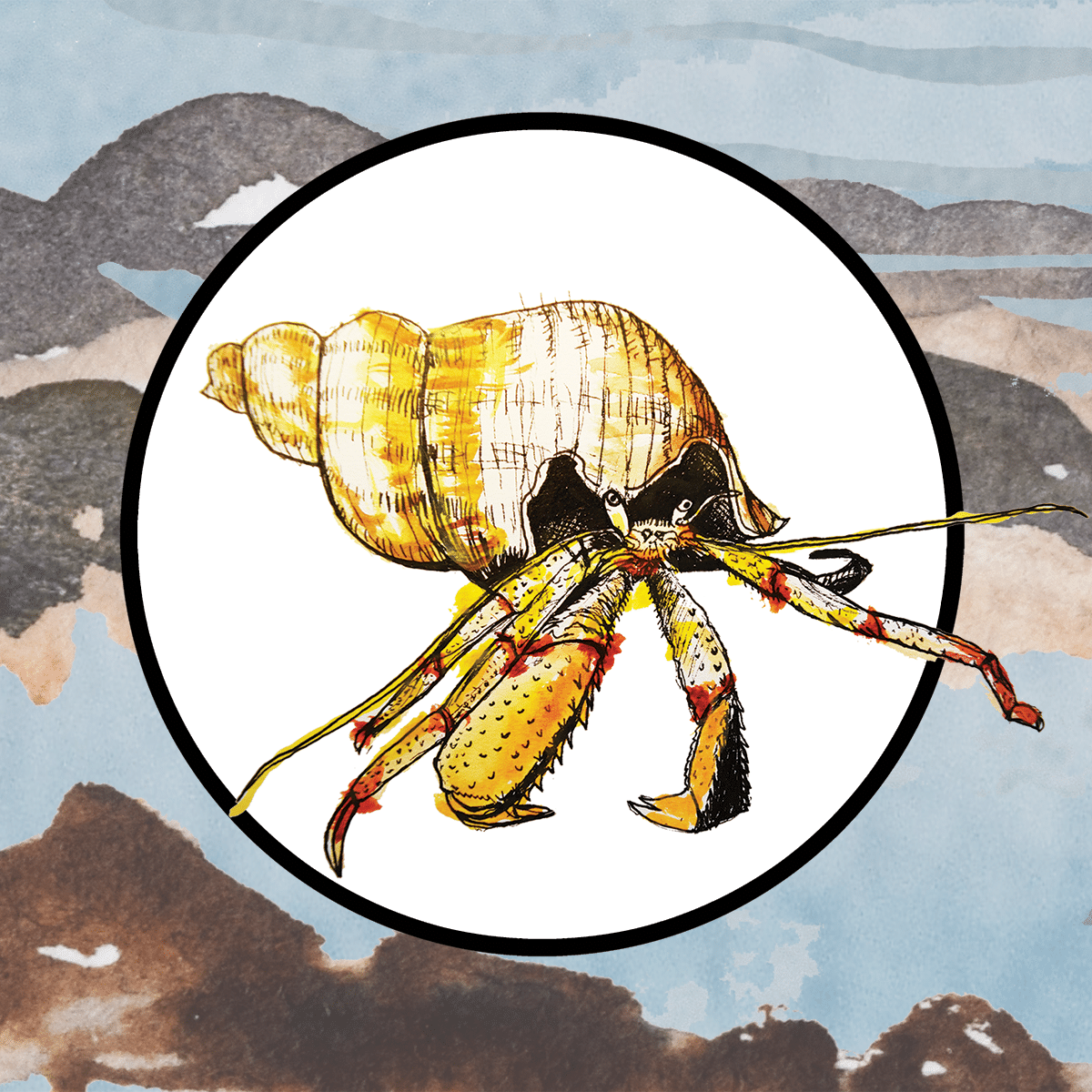This Spring we have given over our windows to highlight the range of diverse wildlife we have on our local coastline. Sussex is home to many miles of shores, and a plethora of species, some quite surprising.
One of the best ways to discover this wildlife for yourself is by going rockpooling. In collaboration with the Sussex Wildlife Trust, the banners in our window highlights the beauty of our coastline, and just a few of the most common flora and fauna you can find at low tide. Rockpools can be a microcosm of life under the deeper sea and is a great way to fall in love with these amazing ecosystems.
In this 2-part post we offer a mini guide to the creatures featured on our banners:

5. Common Goby – The goby has two dorsal fins with a narrow gap between them, the anterior one consisting of six to eight spines and the posterior one eight to eleven soft rays. They are light grey or sandy brown with indistinct dark markings and dark striations on the pale fins. The colour of the male darkens during the breeding season and his fins become more coloured. The average size is about 4 to 5 cm.
The common goby breeds from February to September, laying its eggs under shells, stones or on aquatic plants. The male then guards the eggs until they hatch about nine days later. Common gobies can live for up to three years. They inhabit sandy- or muddy-bottomed shallow areas in estuaries or brackish lagoons at depths of from 0 to 12 metres (0 to 39 ft). Their diet is mostly small crustaceans, worms, larvae and mites.

6. Hermit Crab – In Britain, small hermit crabs are a common feature of the shore, where they frequently adopt the shells of edible periwinkles (Littorina littorea), flat periwinkles (Littorina obtusata) and dog whelks (Nucella lapidus). In deeper water, the shells of the whelk (Buccinum) are often occupied. Occasionally, if two hermit crabs meet, one will attempt to ‘steal’ the other’s shell by forcibly evicting the current owner.
The common hermit crab is an omnivorous scavenger, and can also obtain food by filtering organic particles from the water. Reproductive activity tends to peak in January and February in populations dwelling on the shore, but in those living in deeper water, females have been found carrying eggs throughout the year. The female carries the eggs for around two months, after which time the larvae persist for a number of weeks. Maturity is typically reached before one year of age.

6. Velvet Swimming Crab – A fast-moving and very aggressive species which can deliver a painful nip. Females carrying eggs can be found at all times of the year in Britain. The adults feed on brown seaweeds, molluscs and crustaceans, whereas juveniles feed mainly on crustaceans such as small crabs and barnacles. In some parts of Europe, this species is fished commercially. The fast-moving velvet swimming crab has a flattened carapace, which is wider than it is long. The upper surface is blue but has a reddish-brown velvety covering, which disguises the blue colouration and earns the species its common name. The pincers are equal in size and are also velvety and the eyes are bright red. The colour of these eyes and the general aggressive nature of this species may explain the alternative names of Devil crab and Witch crab. Between the eyes there are around ten narrow teeth on the edge of the carapace.
Visit here for the first part of this mini guide to rockpool life!
Info from the Wildlife Trust on the best sites around the country can be found here.
Illustrations by Amy Hope and Felicity Price-Smith
Info sourced from arkive.org



